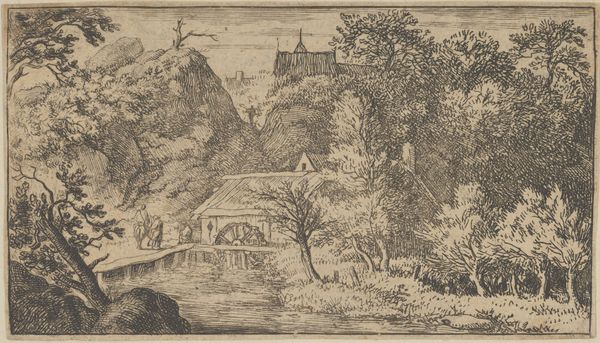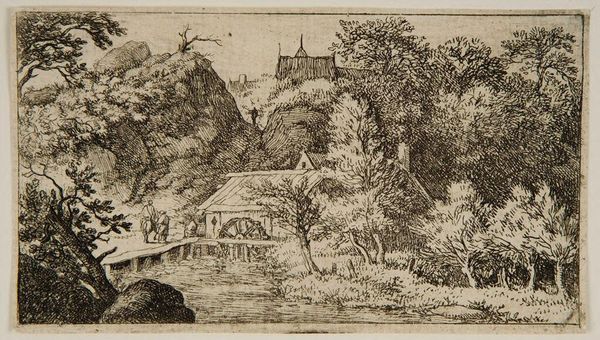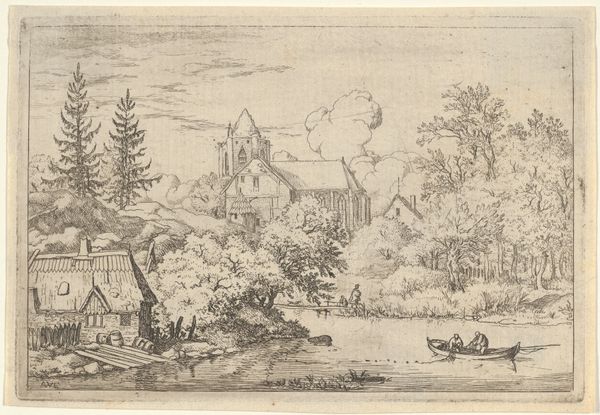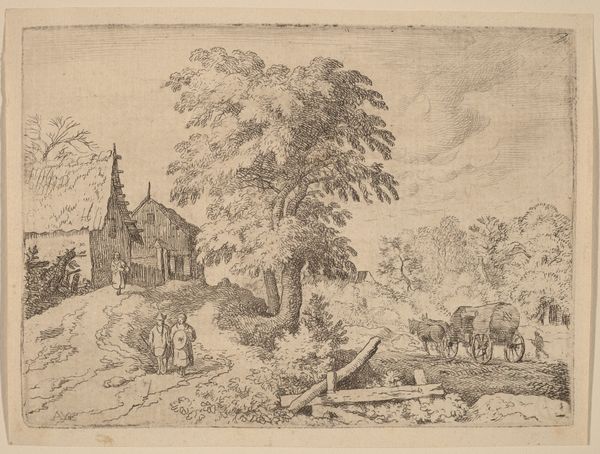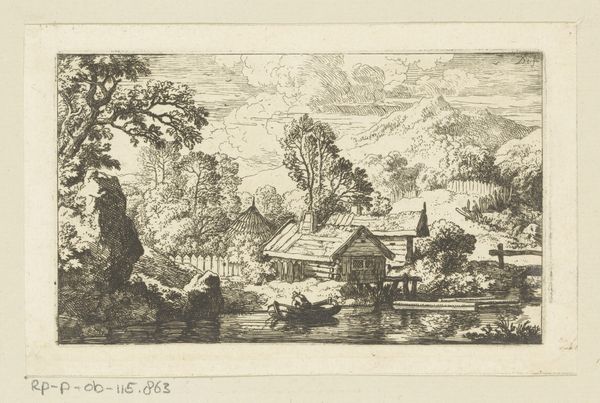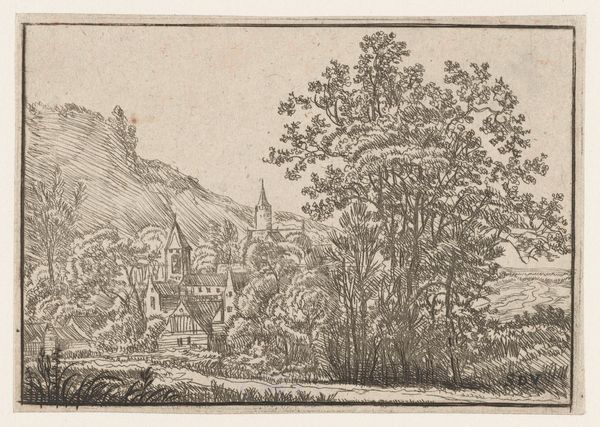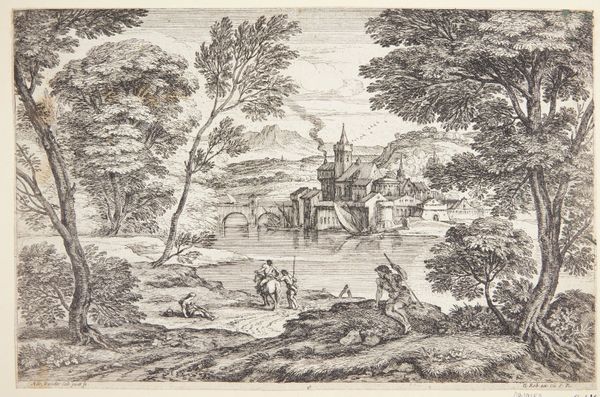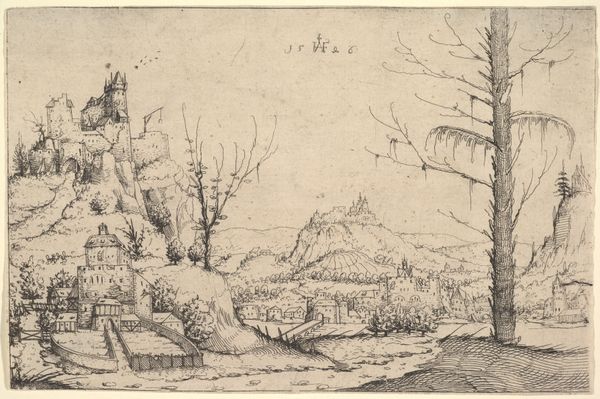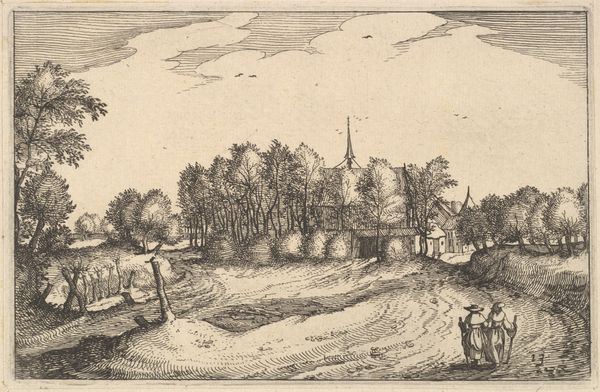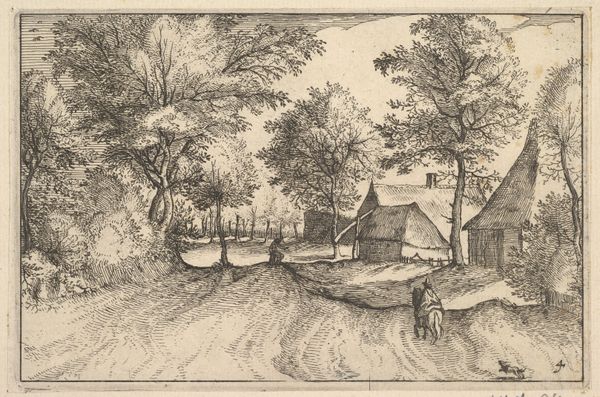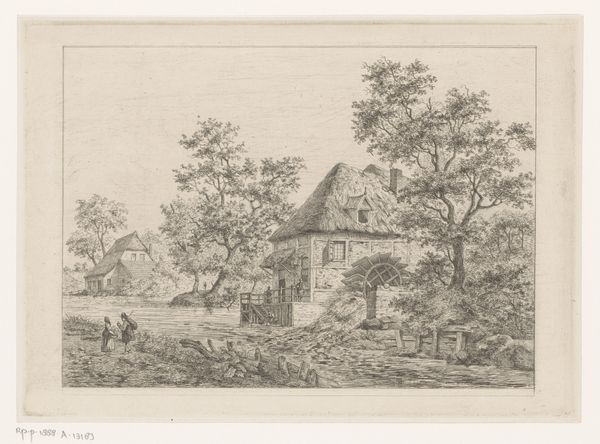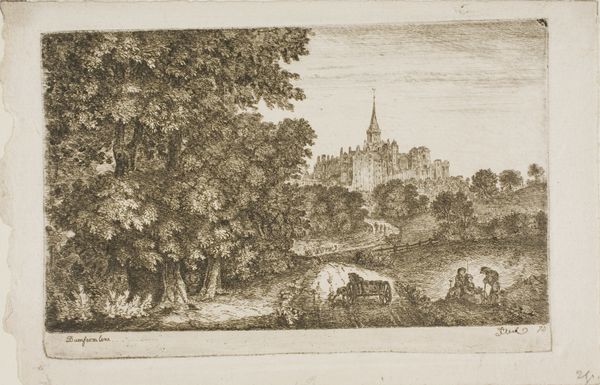
print, etching
# print
#
etching
#
landscape
#
genre-painting
Copyright: National Gallery of Art: CC0 1.0
Editor: So, here we have Allart van Everdingen's etching, "Water Mill at the Foot of a Mountain," dating back to the mid-17th century. The texture created by the etching is incredible. There's a peaceful, almost romantic, feel to the whole scene. What captures your eye when you look at it? Curator: What grabs me? Well, it's more of a slow, creeping realization than a sudden grab. Initially, it's the dark-light dance – the chiaroscuro, as they say. Van Everdingen throws deep shadows against brilliant highlights. It creates a sense of hidden stories, of a world teeming just beyond the sunlit patches. And it speaks volumes about 17th century Dutch painting and its penchant for domesticity. Tell me, do you notice any compositional elements which lend to that narrative feeling? Editor: Now that you mention it, the positioning of the mill feels intentional. It's nestled in the landscape, almost like it's meant to blend in and invite the viewer to enter this picturesque space and imagine living in it. Curator: Precisely! You hit the nail on the head! It's as if we are witnessing a sort of theatrical display, right? A meticulously crafted performance. Do you suppose these rural, humble locations truly existed in the Dutch master's world, or, perhaps, it was nothing more than a dreamscape from which to find brief moments of reprieve? What say you? Editor: That is so interesting to consider... Maybe it was a little of both – idealized but based on reality, providing an escape but still reflecting their world. Thank you, I've got a lot to think about. Curator: The pleasure's all mine. Remember, it's in these little imaginative leaps that art truly comes alive!
Comments
No comments
Be the first to comment and join the conversation on the ultimate creative platform.
